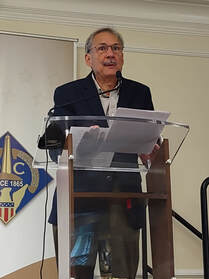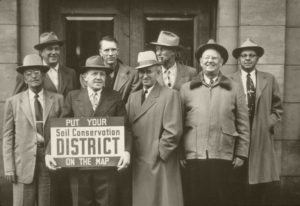Scott Borchert is the winner of the Living New Deal’s first annual New Deal Book Award for his 2021 book about the Federal Writers’ Project, Republic of Detours: How the New Deal Paid Broke Writers to Rediscover America (Farrar, Straus and Giroux). The Award Committee called it: “…a beautifully written and timely book, whose ramble through the lives of New Dealers reminds us of what can be accomplished when the federal government supports American artists to create an enduring legacy.”
Eric Rauchway, Distinguished Professor of History at the University of California, Davis, and chair of the Award Committee, presented Borchert with a plaque and $1,000 prize at the Franklin Delano Roosevelt Library and Museum in Hyde Park, NY at the 18th Annual Roosevelt Reading Festival.
Borchert was one of three nominees for the New Deal Book Award who participated in the Reading Festival, along with Mary Jane Appel, biographer of Russell Lee: A Photographer’s Life and Legacy (Liveright Books in association with the Library of Congress), and Greg Zipes, author of Justice and Faith: The Frank Murphy Story (University of Michigan Press). Their books were selected from a dozen submissions, including biographies of New Deal artists, a study of race and resistance, and an assessment of the New Deal’s place in American history.
Submissions are invited for the 2022 New Deal Book Award, due by November 14, 2022.





